The area which makes up Bullock County, Alabama belonged to the Creek Indians until the treaty of Fort Jackson ceded the western half of it to the Federal government. Around twenty years later, the Cusseta treaty gave the eastern half of the future county. “It was in this section that an Indian village, Tchona nagi existed which later became the important Native American village of Chunnennuggee.
Chunnennuggee Ridge divides the county into two parts, and separates the prairie region from the sandy land region. North of the ridge is a belt of low hills and irregular ridges in a network of V-shaped valleys and wet weather streams. The locality is known as the ‘hill prairie country’. High Ridge, in the south west section is apparently the highest point and the place where Line Creek leaves the county is the lowest.1
First Settlers
The Union Springs Herald of May 8, 1930 provided the historical of the county which stated that the first white settler was B. F. Baldwin, ancestor of Mrs. W. W. Rainer of Union Springs who came quite early and lived peaceably among the Indians. He adopted many of their customs and lived in a tent pitched near the springs under the bluff opposite the head of Chunnennuggee Street in Union Springs.
Midway, located in eastern section of present day Bullock County, was originally located in Barbour County, and was likely first settled by Samuel Feagin who became a land broker and the first postmaster. He also built a small inn, ran a store, and operated a stage coach stop. Feagin’s son, James Madison Feagin organized the Midway Guards during the Second Creek War (1836-37).
Midway, Bullock County, Alabama (Landsofamerica.com)
After the Cusseta treaty, the Native Americans were forced to the West or to Florida and there were hostilities around the area of Midway at ‘Feagin’s Store’, which resulted from a mob of drunk Indians and the stabbing of a white man.
A military company was organized and Major James Madison Feagin served as sergeant for two years. He took part in the fight at ‘Three Notch’ in 1837, where several whites were killed. “The title Major was conferred on him by his election to command the Second Battalion of 47 Regiment of Alabama Militia. He commanded sixty-five mounted volunteers at Camp Watson, on the ‘Three Notch’ Road, belonging to Cowikee Spies commanded by Captain L. Q. Keener to protect citizens from Indians on their way to Florida.”2
Last major battle with Native Americans in Alabama
A major battle was fought with the Native Americans near Midway on the Pea River with General William Welborn leading the settlers. The battle of Hobdy’s Bridge was the last battle fought with Native Americans on Alabama soil, and the fiercest of the conflict.4
Among the first people to homestead in the area of present day Bullock County were several Scotch families who settled at Bethel, which was at the time a part of present day Pike County. They spread to Inverness and Aberfoil. It is said that they built their church before they built their homes. Most of the early settlers came from the Carolinas and Georgia.
Wealthy people settled on the Ridge because of the fertile soil and water supply. From these settlements grew a society unsurpassed with a culture and prosperity typical of the “Old South”. The first church, “Old Ebenezer” was built on Bullock soil was for these people.5
Other settlements were made at Midway, Enon, Guerryton, Suspension, Chunnennuggee, and Union Springs.
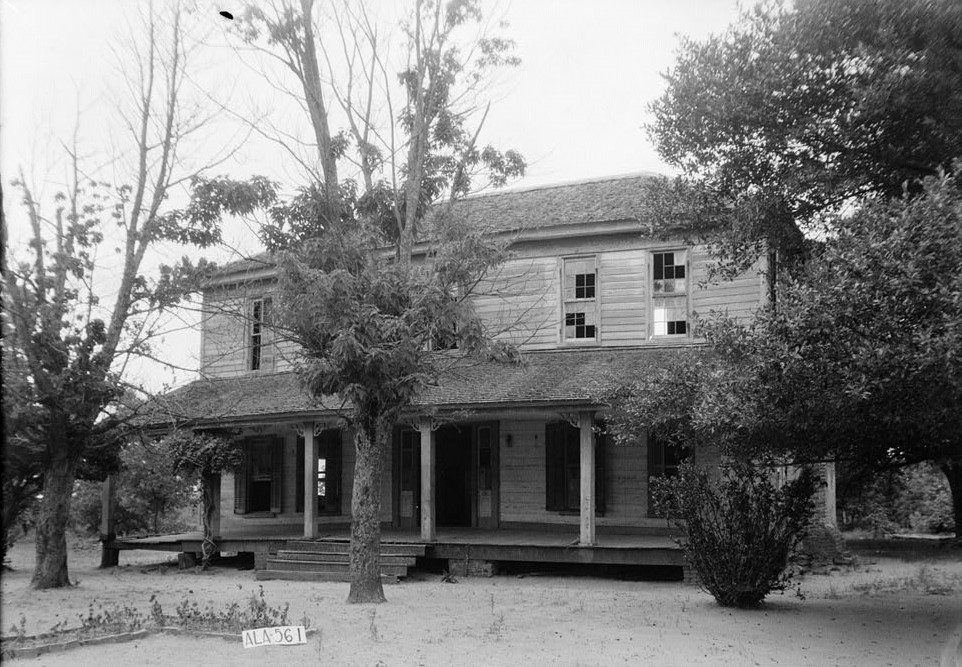 Howe-Roughton House, front -County Road 14, High Ridge, Bullock County, AL 1935 (by photographer W. N. Manning -Library of Congress)
Howe-Roughton House, front -County Road 14, High Ridge, Bullock County, AL 1935 (by photographer W. N. Manning -Library of Congress)
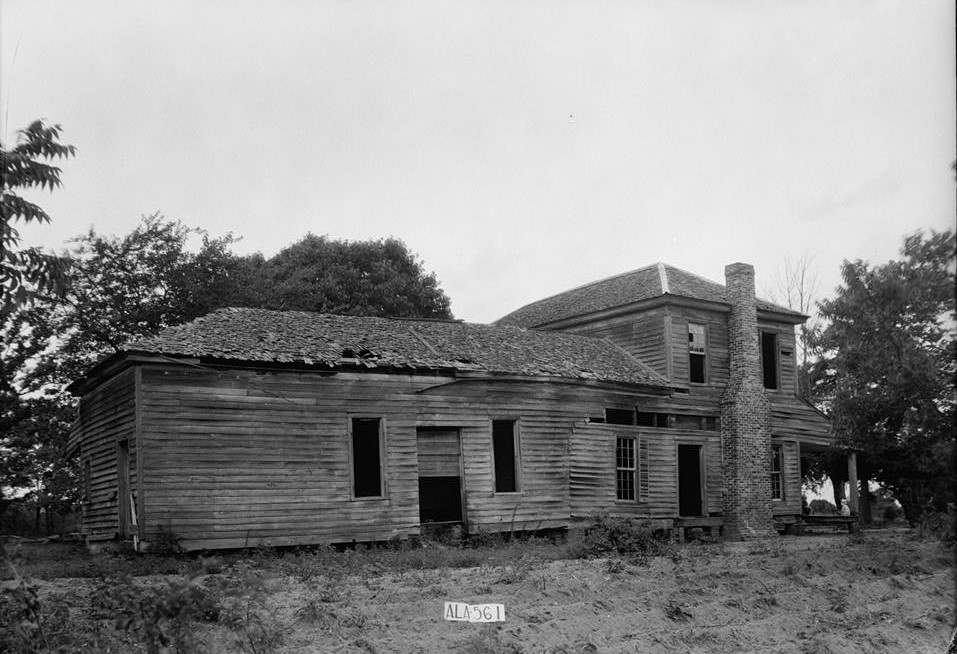 Howe-Roughton House, rear view, County Road 14, High Ridge, Bullock County, AL 1935 (by photographer W. N. Manning -Library of Congress)
Howe-Roughton House, rear view, County Road 14, High Ridge, Bullock County, AL 1935 (by photographer W. N. Manning -Library of Congress)
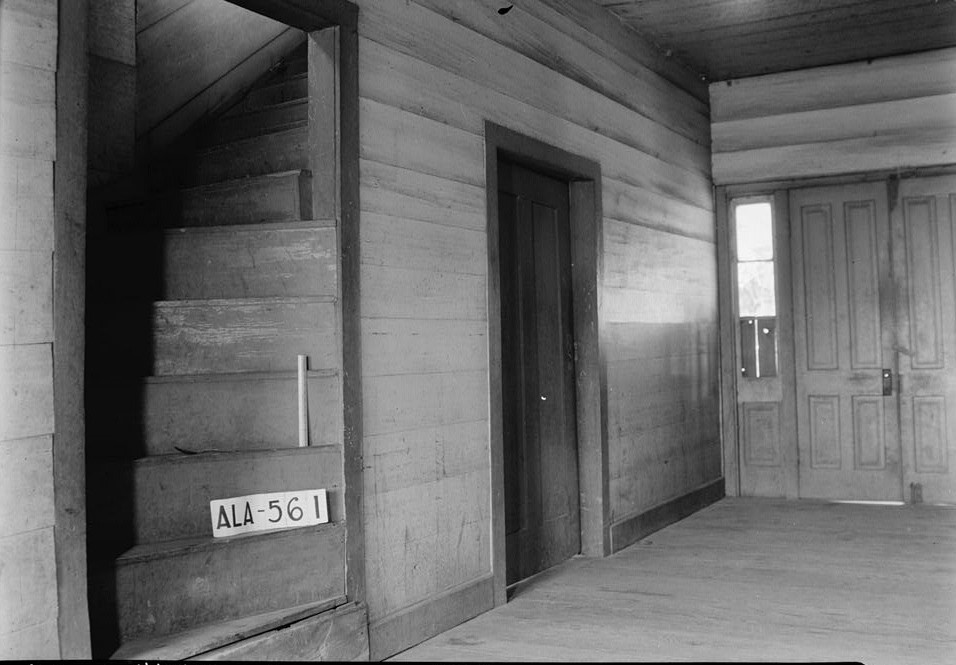 Howe-Roughton House, Enclosed stairs in hall, County Road 14, High Ridge, Bullock County, AL 1935 (by photographer W. N. Manning -Library of Congress)
Howe-Roughton House, Enclosed stairs in hall, County Road 14, High Ridge, Bullock County, AL 1935 (by photographer W. N. Manning -Library of Congress)
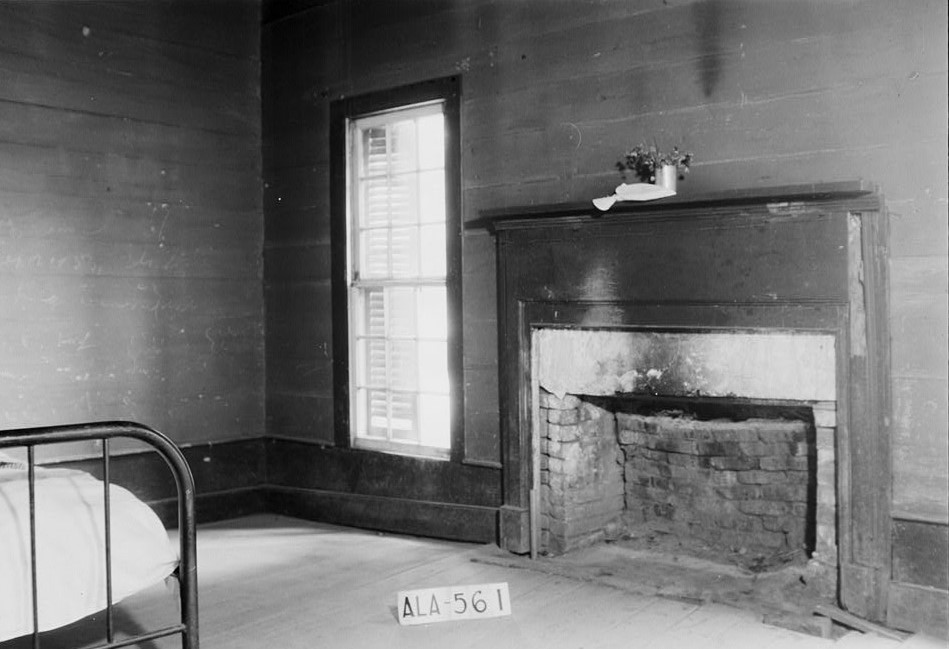 Howe-Roughton House, Bedroom upstairs, County Road 14, High Ridge, Bullock County, AL 1935 2(by photographer W. N. Manning -Library of Congress)
Howe-Roughton House, Bedroom upstairs, County Road 14, High Ridge, Bullock County, AL 1935 2(by photographer W. N. Manning -Library of Congress)
Bullock County established in 1866
On December 5, 1866, the Alabama Legislature approved an act to create the county of Bullock. The area for the new county included the southern part of Macon County, the eastern part of Montgomry County, the western part of Barbour County, and the northern part of Pike County. The county was called Bullock County after an officer by that name who had “a war record satisfactory with the men who followed the standards of the Alabama Rifles and Perote Guards.”3
Freemasons had settled in the area prior to 1866 as the Charter for the old Masonic Lodge at Mt. Hilliard was granted in 1853, when the area was in Pike County. Charter members of the Mt. Hilliard Masonic Lodge included J. L. Brown, Gen. McCreless, J. D. Moore, C. C. Shell, and Joiel Riley. They represented “sturdy pioneers that made a contribution to the formation of a county as well as to a Masonic Lodge.”6
The act establishing the county named James T. Norman, Joel T. Crawford and Malichi Ivey as commissioners to hold an election for county officers and for the selection of the county seat. Daniel McCall, Republican, was elected Probate Judge, and Union Springs was made the county seat. The Baptist Church in Union Springs served as the courthouse.
1Owen, Our State-Alabama, p. 625
2Memorial Record of Alabama, p. 526
3McNair, Cecil E., Reconstruction in Bullock County, p. 1. (from Acts of Alabama, 1866-67, pp. 65-68)
4Union Springs Herald, May 8, 1930
5Union Springs Herald, May 8, 1930
6Griswold, Elizabeth Black, History of Bullock County, (term paper written in 1937 for a class in Southern History at Alabama College, Montevallo, Alabama)
Biographies of Notable and Not-so-Notable Alabama Pioneers Vol. I
Revised with direct links to many sources and burial sites! This book includes the genealogy of and biography of William Barrett Travis of Alamo fame and Elisha Cottingham, the Alabama descendants from the Tapestry of Love, Historical Fiction Series by Donna R. Causey. Check out all Alabama Pioneers Biography books.


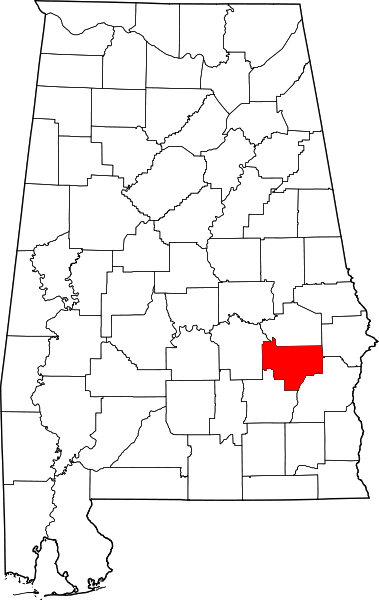
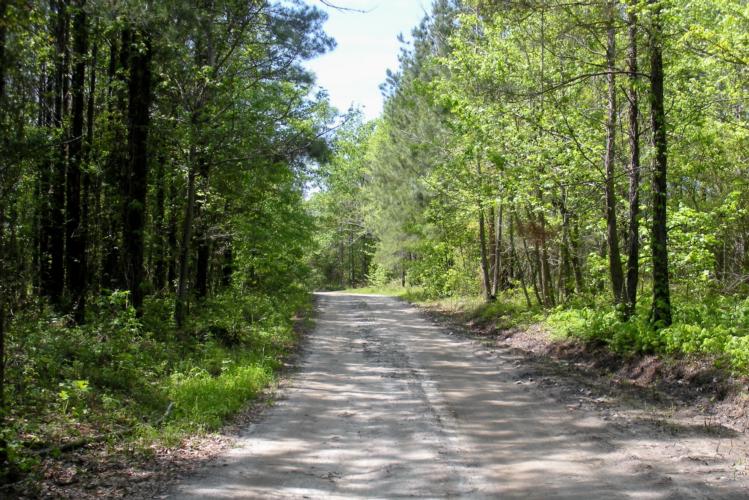

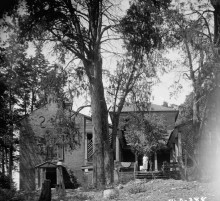

Loved this article!
Linda McNair Cohen Kirk McNair Cecil McNair listed as a source for this article.
This is ineteresting to me because my grandfather, Dr. William Henry Harrison was a physician in Midway and passed away in 1928. He died from TB, which he got from a patient.
This is interesting to me because Mrs. Emma Harrison and my great grandmother, Mary Eugenia Turman Alston, also of Midway, Ala. were friends.
I have the following information on your family. Do you have photos of their home?
Dr. Wm. Henry (b. 2/13/1870, d. 12/22/1928) and Mrs. Emma Houston (b. 1/06/1874; d. 12/22/1928] Harrison, lived on the left hand side of Old Troy [Dirt] Road going towards the intersection with Depot Street..Their property was located on the opposite side of the road from the Midway Methodist church. The 1930 Midway, Ala. Census showed that Dr. Harrison’s real estate was valued at $5,000.
Iona Pruett McMillian of Midway, Ala. commented that they had a very fine home & large garden.
[Iona has a wealth of information on Midway & its families.]
They had a daughter, Cathleen Harrison, born abt. 1901 and a son, William T, born about 1909.
“Mrs. Harrison and my great grandmother, Mary Eugenia Turman Alston, competed with one another to see who could have the biggest and most unusual plants in their gardens. As one approached the Turman/Alston Midway, Ala. home, named ‘Alston Heights’ by Eugenia Norwood Alston Branscomb, one could circle around a palm tree, growing in the driveway. Mrs. Harrison also had one growing in her garden.”
Look forward to hearing from you!
Eugenia Branscomb Hobday [email protected]
Great read.
nice article – thanks.
This was a very interesting article. Being from Union Springs it was very enlightening. Thanks!
This was of interest since it talked about the last Creek Indian battle in Ala just north of Hobdy Bridge, which is in Pike County, Al. I own the land near this site that is now marked with a Historical marker on Al 130 near Hobdy Bridge that crosses Pea River.
I am trying to photograph the ‘Hobdy’s Bridge: Last Indian Battles in Alabama’ historical marker that is supposed to be on the Pike County side of the bridge but can’t seem to find it looking on Google street view. Is it still there? Thanks…
I am a fairly new reader of your wonderful email newsletter. I really enjoy it and wonder if I have missed earlier articles about northwest Alabama in Colbert and Franklin County. My roots are there and my family considered Crooked Oak and Littleville as the home place. I have generations of relatives buried in Russellville, Osborne Cemetery in Littleville, and Tuscumbia. Family stories tell of early arrivals in Alabama before the Indian Removal and involvement in the Civil War and service with Forrest and Roddy.
My father A’Delbert and my Mother Gertrude Willett Bowen were teaches throughout the area including Mynot (south of Cherokee) and Bellgreen in the early 19teens and through the 1940’s. I lived in Tuscumbia until I left home in 1951 to go to school and Georgia but I still feel a deep affection for the area.
Have I missed anything or do you have any suggested reading for me?
Thank You,
Tom Bowen
How do I get a copy of Elizabeth Griswald’s term paper. Interested in the Graham family from Bullock County.
Major James Madison Feagin was my gggrandfather.
Kinda reminds one of the old Union Station in Mobile which was immediately below old Baldwin County.
There are Feagin’s nearby too.
Seems Alabama today really didn’t begin being the Alabama we know till after 1901-1907.
Even the land records from Federal Sources which Kat some earlier records neglect to mention that Congress nullified land patents prior to 1835 due to fraud.
Wonder how many people are left being squatters relying solely on adverse possession?
So far it’s been hard to get a complete title search beyond the 1950’s in Mobile County…
As a public land State that means all land should orignate in a Federal Land Patent with a complete and accurate title search being possible.
If not, the title may be subject to turnover.
Hmm…
Any comments on how to secure legal title legally in Albama?